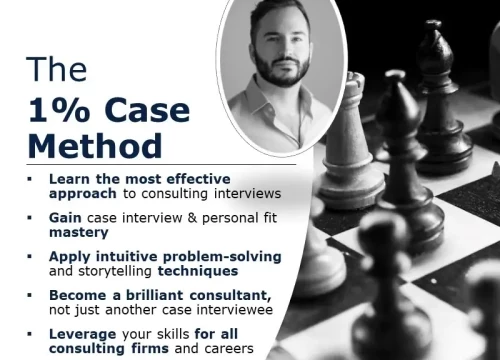Hey there, i have a question regarding verbal communication during calculations in (virtual) case interviews. I understand that the interviewer should be included in the process of calculation by verbalizing every step of a math problem.
For example, when making a calculation like 23,000 * 50% * 10% + 2,000, i can easily communicate every step with the interviewer („So first, i calculate 50% of 23,000, which is 11,500. Next i calculate 10% of these 11,500, which results in 1,150. Finally, i add 2,000 to these 1,150, which leads us to a final result of 3,150.“)
What i am struggling with is how to effectively communicate (precise) multiplications like „289 x 486“ or dividing numbers like 31/792, and making calculations like 17% of 1,724.
When being asked to calculate these number precisely in a case interview, i would do a written multiplication or division, in which the „intermediate“ results are probably rather confusing to an interviewer.
MULTIPLYING NUMBERS
On my paper, the written multiplication would look like this:
289
486
________
1,734
+ 23,120
+ 115,600
__________
= 140,454
And this calculation takes like 15-30 seconds.
Which of these two would you say is the better approach
(1) „I am now going to do a written calculation of 289 x 486 on my paper an get back to you with the result in 20 seconds? (….do the calculation for 20-30 seconds…). So the result of 289 x 486 is 140,454."
(2) „I am going to calculate 289 x 486 now. To do this, i will split the calculation in three steps: first, multiply 289 with 6. Second i multiply 289 with 80. Third i multiply 289 with 400. I will then add these three results up. So for the first step, my result is (…do the calculation for 5 seconds…) 1,734. For the second step, my result is (…do the calculation for 5 seconds…) 23,120. For the third step, my result is (…do the calculation for 5 seconds…) 115,600. Now to get to the final result of 289 x 486 i am now going to add up these three numbers (…do the calculation for 5 seconds…), which results 140,454. So 289 x 486 is 140,454.
DIVIDING NUMBERS
When doing a precise calculation like 31/792, this always takes me like 20-25 seconds. Here i do not know how to make any useful intermediate results i can communicate to the interviewer? Would you say it would be appropriate to say: „I am now going to do a written calculation of 31 divided by 792 and will get back to you with the result in 20 seconds.“? Or do you have a better idea?
Thank you so much in advance!
(editiert)








